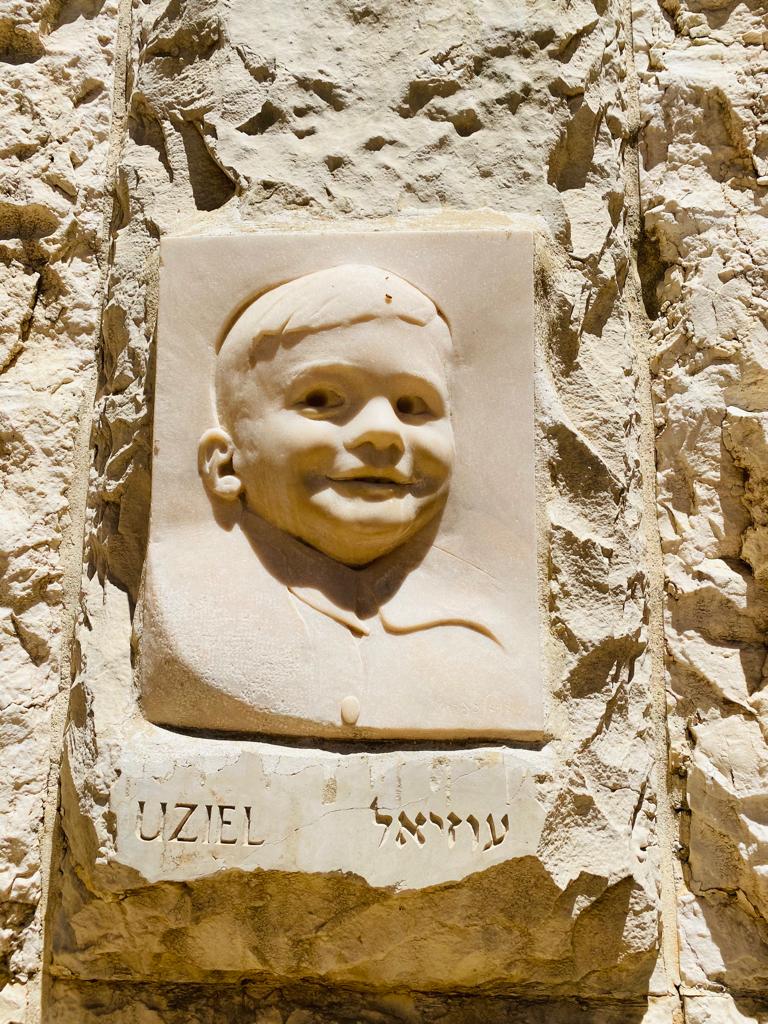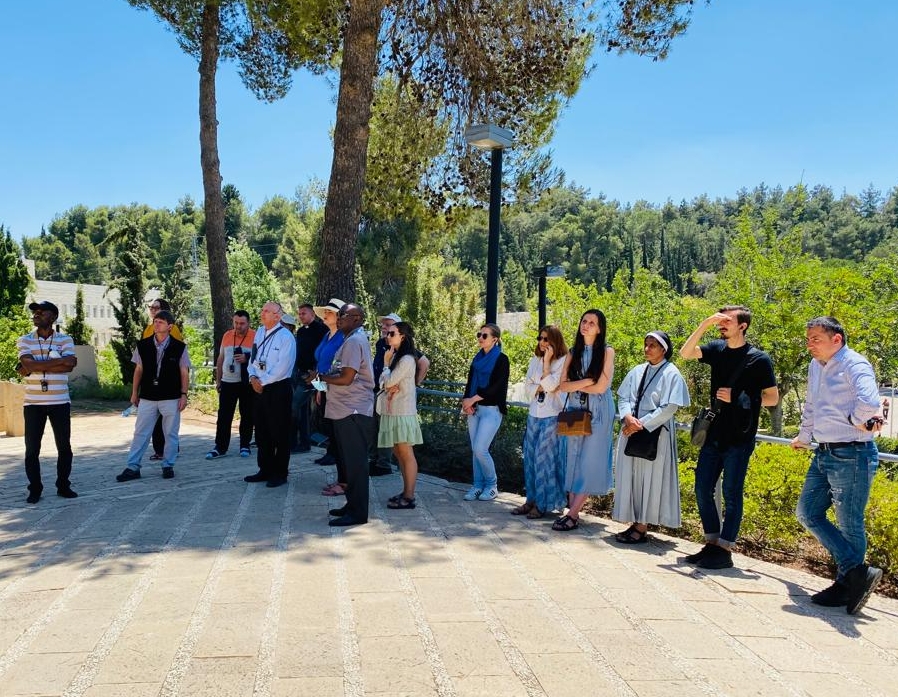The Russell Berrie Fellows of Cohorts XIII and XIV spent some unforgettable 10 days of June 2022 in Israel. During their annual study tour to the Holy Land, Fellows had an excellent opportunity to experience in person the realities of the coexistence of the three Abrahamic religions. The program included academic studies in Judaism and interreligious dialogue, as well as educational visits to the Jewish and Christian sacred and memorial places.
One of the most touching moments of this journey was the visit to Yad Vashem – the World Holocaust Remembrance Center, which is a worldwide known place for the Shoah education and research. Built in 1953 on Mount Herzl, the Yad Vashem’s mission is not only to preserve the memory of the persecuted Jews but also to honour the non-Jews who, by risking their lives, chose to help their fellows escape the genocide.
“My heart sobbed painfully as I walked through the long walls of the Yad Vashem that shed light on the memory of the unfortunate Jewish people who lived in the most horrible Nazism and Fascism dictatorship periods in the 20th century,” shares Fr. Baiju Julian (Cohort XIII) from India. He adds, “My mind desperately threw some questions: How could humanity permit such atrocious systematic killing, totally negating the fundamental human right to life? Why were Jewish people haunted and treated in this way? Why did the German people tolerate inhuman actions in their country?”
 |  |
Reflecting on the emotional appeal of the inner space of Yad Vashem, Olena Komisarenko (Cohort XIV) from Ukraine points out that the building is unique in the way it resembles the fear in the lives of people who experienced unprecedented genocide. “It is filled with cold gray cement on the hill in a position that seems unstable from a distance as if it would be about to fall into the abbess. It creates a sensation of danger and total absence of life control or security that is so evidently present all the time,” she notices.
Christopher Akongnwi (Cohort XIII) from Cameroon remembers the two places that brought out tears from his eyes during the visit, namely the Hall of Remembrance and the Children’s Memorial. “I could not withhold myself from anger seeing the modern cruelty of political leaders against their fellow human beings; how the sacredness of God’s most beautiful creature, the human person, is jeopardized for selfish interest,” Christopher says. “Some people would certainly ask me, ’Where is your God?’ and I would obviously answer with my humble faith, ‘Our God is in heaven, he does whatever pleases him’ (Psalm 115),” he concludes.
Inside the museum, the unbelievable quantity of informative materials is accompanied by visual symbols reflecting the hardship of the Jewish lifestyle in this sorrowful period of human history. The clothes and shoes of the victims, the stones from the Jewish ghetto in Poland, the 10-meter deep black well reflecting the photos of victims, and at the end of the visit, the candles in a totally dark and silent room in remembrance of the deaths of Jewish children. Olena Komisarenko emotionally states, “Everything in Yad Vashem quietly screams about the tragedy making us feel so deeply that human life and dignity are above all in any circumstances.”
At the end of the exhibition, Fellows reached a section with the names of victims killed without being identified. “When the whole group left,” says Evans Nyamadzawo (Cohort XIV) from Zimbabwe, “I remained there alone with my colleague. We were both staring at different pictures, but I believe that we shared the same feeling. I saw a little girl with a lovely smile in the photo. I could not take my eyes off her innocent and beautiful face. I saw a child whose future, dreams, and life were cruelly stolen.”
Evans admitted his feeling of perplexity about how a human being could do such an atrocity to another fellow being. He argues, “I must raise my kids and influence people in my community so that they will be among the Faithful Among the Nations (i.e., non-Jewish people who saved Jews from being persecuted and killed).” “I bow in front of people who risk their lives for others, who are ready to stand up for what is right even if it costs their own lives, and even though they might have such differences as nationalities, races, religions, languages and so on,” Evans comments.
Fr. Baiju concludes his reflection about the Yad Vashem visit with a powerful statement: “The fate of millions of Jewish people who became the victims of the horrors perpetrated by political policies must never be repeated again in the world. The Museum of Yad Vashem serves as a reminder to humanity.”
We pray to God for miracles to touch the hearts of people to strive for the common good and respect for the life and dignity of human beings. We stand with all people who suffered then and now.

